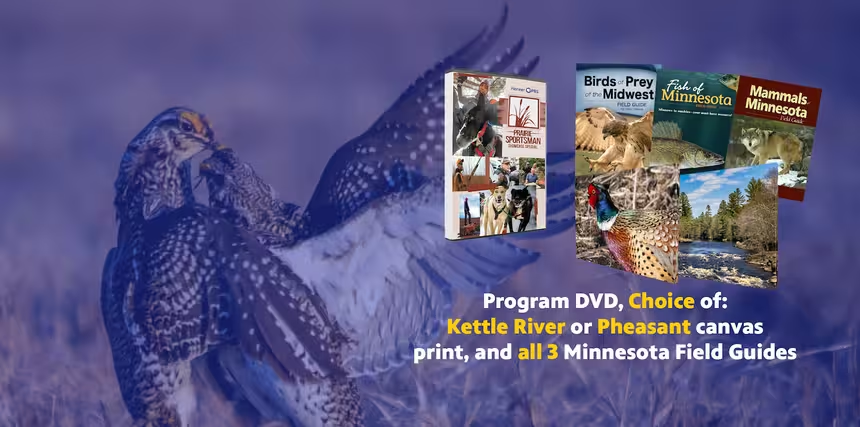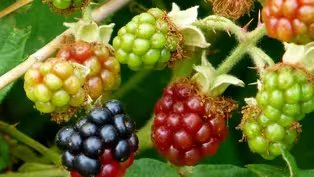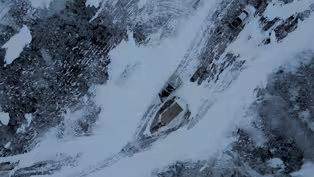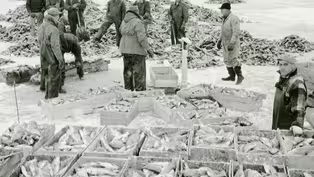Prairie Sportsman
Saving Fish Tales
Clip: Season 16 Episode 10 | 10m 13sVideo has Closed Captions
Bret visits Curt Piechowski at a new museum exhibit about his family history in fishing.
Host Bret Amundson visits the Lac qui Parle History Museum to explore the new exhibit celebrating the long family history of fishing by the Piechowski family. Curt Piechowski walks Bret through the exhibit and shares memories of growing up in the family business.
Problems playing video? | Closed Captioning Feedback
Problems playing video? | Closed Captioning Feedback
Prairie Sportsman is a local public television program presented by Pioneer PBS
Production sponsorship is provided by funding from the Environment and Natural Resources Trust Fund, West Central Initiative, Shalom Hill Farm, and members of Pioneer PBS.
Prairie Sportsman
Saving Fish Tales
Clip: Season 16 Episode 10 | 10m 13sVideo has Closed Captions
Host Bret Amundson visits the Lac qui Parle History Museum to explore the new exhibit celebrating the long family history of fishing by the Piechowski family. Curt Piechowski walks Bret through the exhibit and shares memories of growing up in the family business.
Problems playing video? | Closed Captioning Feedback
How to Watch Prairie Sportsman
Prairie Sportsman is available to stream on pbs.org and the free PBS App, available on iPhone, Apple TV, Android TV, Android smartphones, Amazon Fire TV, Amazon Fire Tablet, Roku, Samsung Smart TV, and Vizio.

Prairie Sportsman Premium Gifts
Do you love the great outdoors, hunting, fishing, hiking and conservation? Consider becoming a friend of Prairie Sportsman to support it and receive gifts with your contribution.Providing Support for PBS.org
Learn Moreabout PBS online sponsorship(gentle country music) - In a small town along the 45th parallel, there's a museum working to preserve the history of a family-run commercial fishing operation that began over a hundred years ago in Western Minnesota.
(gentle country music continues) We're with Curt Piechowski at the Lac qui Parle County Museum where he's showing us a few of the things he has gathered to tell the story of commercial fishing in Western Minnesota and preserve the history of the Piechowski Fish Company.
- This is my father and my uncle They're the ones that started the whole process on commercial fishing from Browns Valley.
There was six of them and they all worked together.
They each had their crew and we started outta Madison Browns Valley.
We went all over South Dakota, Minnesota.
- [Bret] So these are, these are all brothers?
- [Curt] They're all brothers, right.
- Six of them.
- Six of them.
- And they all did their own operation?
- But it was a family company.
They went in a war and then they come back out of the war, World War II, and then this Randall Brothers had it in Browns Valley in 1920.
So throughout that year, then they learned from him.
So then they figured, "Well there must be a few dollars in this, so we're gonna do this on our own."
So then they, all the brothers, got together and they started the company, Piechowski Fish Company - And that's where it started.
So what year is this then?
- This is about 1950.
(gentle music) We have a resort on Lake Traverse also, and that's what I used to manage when I was 12 years old.
My dad went to commercially fish and he said, "Son, we're gonna teach you the ropes, so you manage my resort while I fish."
And so we had boats, pontoons, and we sold minnows commercially.
(gentle music) They all loved it because they would talk fish 24 hours a day 'cause this is what their profession was.
They talked fish, they talked how we were gonna catch the fish, get rid of the fish.
But it was cold out there, but then they enjoyed it so much.
(gentle music) - So here's one of your nets or seines.
How old is this right here?
- This is built probably in 1950, '55.
- Oh wow.
- And then we'd get the webbing from Tennessee.
It come just as a great big box.
And then we, we'd have to stretch it out in a quonset or something and we'd have to put the corks on.
And also we'd have to put the pans on.
That would be the, that's what we call the lead lined where we, I call them pans.
But these are the weights.
This is the top of the seine.
This is the bottom of the seine.
So it'd be, it would be stretched out, and then we'd have to sew all this stuff on there, you know, stitch all these on there.
- How long would that take?
- About two, three months.
It was to do one seine, that's just a part of it.
We'd have over a mile long or 3/4 a mile.
That's just part of a seine.
- [Bret] So your net that you'd set out would be over a mile long?
- About three quarter mile.
- Oh my gosh.
Then you're gonna need to build an addition on.
- Well that's why I only brought part of the seine here.
- Wow.
- And then we had six or seven seines, different depths, you know, some would be 20 feet, 15 feet, three, like Marsh Lake was a three foot lake.
So we had to make a three foot seine for that lake.
When we made the seine, it was just like we was visiting a family reunion.
Just like you go fishing with your family, with the six brothers and myself, a couple of my uncles and cousins.
It would be just, we'd laugh, we'd talk.
(gentle music) One time we caught over a million pounds on Marsh Lake- - A million pounds.
- On one pull.
And soon as we got the front end of the seine in the fish started coming in, carp, sheepshead.
We caught sheepshead, buffalo fish, carp, but all the game fish we had to put back, because that's a game fish.
But it took us three days to get those out with dipping by hand.
(gentle music) - [Bret] So you've got fish piled up.
So you pull them out of the nets, you're piling them up, and then you're putting them in boxes, and then that's where you load them on trucks and start shipping them.
- Right, these seines that hold 500 boxes and these boxes are a hundred pounds of fish.
We'd have to weigh them, you know, for a hundred pounds.
And we'd load 500, 600 on these semis.
Now this million pounds we might have had 15, 20 semis coming a couple hours in.
You know, they'd come then we'd load them and we'd take them away.
(gentle music) 99% went down to Spirit Lake, Iowa.
There's a processing plant there They made fish patties, they made fertilizer out of them.
Fish sticks.
Then they made smoked carp out of them.
So it's a going business.
- Yeah, did those fish patties e in restaurants like McDonald's?
- McDonald's, restaurants, schools, colleges.
So we were eating, you know, we were eating fish patties.
So Filet of Fish may have come outta Marsh Lake.
- Marsh Lake, it (gentle music) When my dad died in '84, Richard and I, Piechowski, my cousin, we started smoking fish and we'd sell to Schwans, Sweigerts, and then we shipped to Red Owl stores.
Super Value, Hy-Vee.
Hy-Vee was a good store that I could sell to.
Down South they love catfish and carp.
I mean that's a delicacy down there.
And we used to ship Missouri, but Minnesota, they want walleyes, birch- - [Bret] Well there's less bones in those fish.
- That's a big thing, the bones in carp.
Yeah.
- Yeah.
(gentle music) (vocalizing) - [Curt] There's only four or five companies left out of Minnesota.
And I've talked to six of them in the last couple months.
And there's only about four companies left.
- [Bret] Are those family run operations too?
- They're family run.
In fact, in a couple weeks there's a company I just talked to, they're gonna pull down a Lac qui Parle, open water.
And the guy is 82-years-old and his son is 30, and his son took it over.
And he invited me to down there, we're gonna have coffee while his son does the operation on Lac qui Parle.
(gentle music) - [Bret] So when did your family get out of the business?
- It was 1998 when my cousin Richard passed away, and that's when everything folded up, we all kind of got done with it.
- [Bret] Are you sad a little bit that the company- - Well I am.
See this is why I love to do this 'cause my uncle started and my dad, and I just kind of wanted to show them what we did back in the day.
You know, I mean I don't I get teary jerky, but yeah, it's sad.
- I bet.
- It's sad.
- Well that's a lot of family history on these tables right here.
- Right.
(gentle music) - You know, you drive by these small town museums or these small county museums, and you always want to go, "Gosh, it'd be neat to go in there and check it out," and it's like, "Ah, I'm busy today," or "I don't have time," or "I'm on my way to work," or whatever.
But people really need to take the time to stop in, because every time I do, I appreciate what I see in there.
Because people now are gonna be able to come in here and see your family history with this commercial fishing business.
What are they gonna be able to in here?
- Maybe some ice chisels, then all these pictures will be on the wall.
And then they're also gonna put a TV in here with some of my films and stuff that they're doing here.
They're taping some of my films and they'll have that a TV so that they can sit down on a chair and the kids can just watch it on the TV there.
(gentle music) - The museum, this part of the museum, was built in the 1970s, but the Historical Society started way before that.
We have a lot of history that we're collecting and sharing with the people.
We do a lot of family research too.
So we have a lot of family history records.
So a lot of people come to find pictures of their family or family stories.
We change our displays quite often so people can see them.
And each township, I don't know if you've noticed, has their own booth out there.
So they like that.
We have the school building, the Robert Bly building.
Robert Bly was an author, the first poet laureate of Minnesota.
So we have his study out here because he lived right outside of town.
And we have a machine shed full of machines.
We have a schoolhouse, an old gas station, a log cabin that once was a schoolhouse.
It's a lot of interesting things outside.
(gentle music) We have a good collection coming in thanks to Curtis.
He's sharing his story and I think it's gonna be a really good story once we get it up.
The display is gonna be open on, we're having an open house on May 18th.
So if anybody wants to come and see the new displays, we're working on a couple different displays.
One on farming and then one on the fishing.
(gentle music) - Yeah, we're gonna have this whole wall here.
We're gonna put the seines up there, pans, corks, and then all the pictures that we've taken will be up on the wall here for people to come in and see.
- That's gotta be a neat feeling, to have- - Yeah.
- Your family history preserved in the museum.
(gentle music) - If some young kid can come in here and say, "Oh, look at this, this project these people did, maybe I want to go out fishing with my dad or my uncle or my brother or just go out fishing with them," give them a chance to get out and see the environment.
You know, go hunting, fishing, nothing against other stuff.
But then I think fishing is- - [Bret] Get them into the outdoors.
- [Curt] Get them out to the outdoors, yeah.
That's what I'm kind of trying to do here.
I guess it's a story that it's gonna be a lost thing in a few years because there's, as I say, there's only four or five left in in Minnesota that do this thing.
(gentle music fades)
Fast Forage: Black Raspberries
Video has Closed Captions
Clip: S16 Ep10 | 2m 49s | Fast Forager Nicole Zempel shows viewers how to find the delicious black raspberries in the wild. (2m 49s)
Video has Closed Captions
Clip: S16 Ep10 | 12m 34s | Host Bret Amundson visits the “Keep it Clean” project in progress on Lake Mille Lacs. (12m 34s)
Piechowski Fishing and Protecting Water
Preview: S16 Ep10 | 30s | Host Bret Amundson visits Curt Piechowski on his family history in fishing and a new museum exhibit. (30s)
Providing Support for PBS.org
Learn Moreabout PBS online sponsorship
- Science and Nature

Explore scientific discoveries on television's most acclaimed science documentary series.

- Science and Nature

Capturing the splendor of the natural world, from the African plains to the Antarctic ice.












Support for PBS provided by:
Prairie Sportsman is a local public television program presented by Pioneer PBS
Production sponsorship is provided by funding from the Environment and Natural Resources Trust Fund, West Central Initiative, Shalom Hill Farm, and members of Pioneer PBS.




